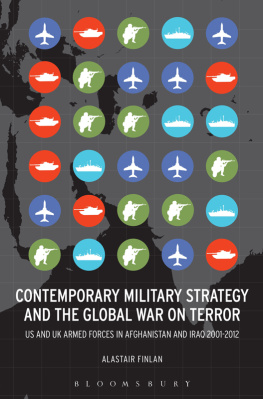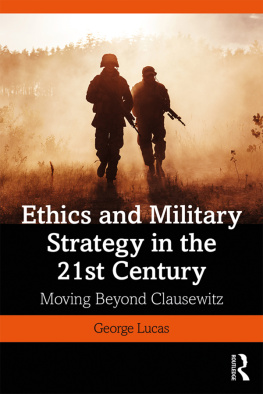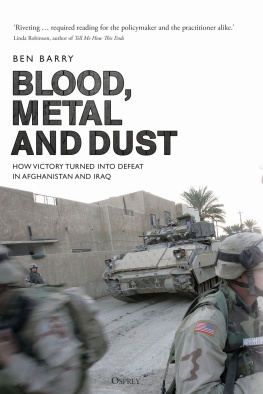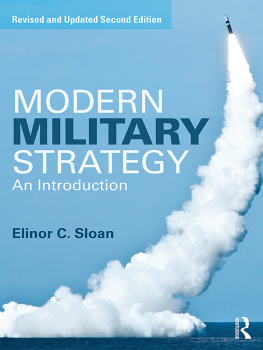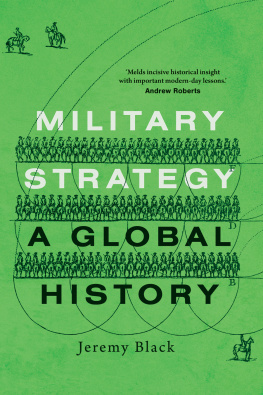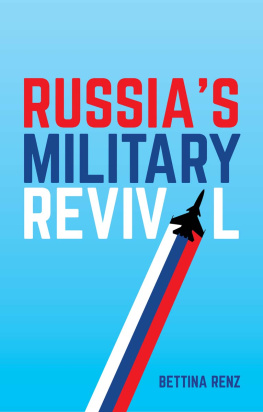This book explores the evolution of contemporary military strategy by the United States and the United Kingdom in relation to the Global War on Terror (GWOT). It does so from the perspective of strategic studies that has a focus on the use of force in international relations. For most people, this is an esoteric area of study because it is not a mainstream subject and there are just a few centers for this field located in a handful of major universities around the world. Strategic studies is a sub-field of the discipline of international relations and gained purchase as an area of academic interest in the aftermath of World War II. Its popularity was intimately linked to the invention of nuclear weapons and the outbreak of the Cold War between the Soviet Union and the United States. Strategists focus on the operational problems of today and tomorrow with an eye on the past in order to develop prescriptions for the future. Civilian strategists dominated the development of nuclear strategy in the West and also developed ideas about limited warfare during the counter-insurgency campaigns in Malaya and Vietnam and explored the potential of new technologies on land, at sea, in the air, and in space. With the end of the Cold War, strategic studies became deeply unfashionable with many scholars moving into the seemingly more pertinent areas of international security and security studies to embrace the challenges of the new strategic environment in which military force appeared less relevant. Consequently, by the time of 9/11, strategists in academic departments around the world were quite thin on the ground, yet for those of us still working in the field, the last decade or so has been intellectually fascinating and yet horrifying in terms of the gross misuse and misunderstanding of strategy.
This book offers a critical examination of the application of military strategy in the GWOT. It is based on a close reading of events, from 9/11 to present-day operations in Afghanistan from a civilian strategists perspective who has made a study of both campaigns as well as the military cultures of the United States and United Kingdom.to construct strategy due to muddled overall political aims and ineffective military means on the ground. No one element can be blamed solely for this state of affairs because political and military elites working together, wittingly or unwittingly, enabled this situation to occur. As such, the consequences have been simply catastrophic for the people of Afghanistan and Iraq, but equally for the American and British service personnel who volunteered to serve in these challenging operational environments. Third, it asserts that with the end of the GWOT in 2014 and the withdrawal of foreign forces from Afghanistan (they all left Iraq between 2009 and 2011), the harsh audit of these wars will become painfully apparent in terms of the sheer cost in blood and treasure. Of the latter, it will take decades to pay for the campaigns. The noteworthy question from the GWOT will be what did the United States and United Kingdom gain from all this expensive military activity and, in just a few years from now, a new generation of historians and social scientists will inevitably try to tackle this puzzle and ascribe meaning to it. In the final analysis, it is remarkable that two of the most advanced and sophisticated armed forces in human evolution have singularly failed to construct effective military strategy in both theaters of operations. As in the Vietnam War, a generation or so earlier, they have won the battles and most of the tactical fights, but failed to get a grip on the actual wars. The outcomes in both Iraq today and Afghanistan tomorrow are, and will be, messy and embarrassing for all those involved in the top-level decisions in both political and military elite circles that led to the use of military force in both countries. History will be unkind to the architects, civilian and military, of these indecisive wars of choice that may well inadvertently increase global threats to the United States and United Kingdom rather than diminish them in the future.
Scope of the book
The balance of material in this book reflects the character of the unequal partnership of the coalition effort in the GWOT and deliberately focuses more on the United States or the dominant actor in Operation Enduring Freedom and Operation Iraqi Freedom rather than its junior partner, the United Kingdom. Chapter one explores the theoretical foundations of contemporary military strategy and the various strands of thought that have influenced modern conceptions, from the advent of nuclear weapons to the impact of digital technologies. Chapter two focuses on the shocking events of 9/11 and how key policy makers in the United States set the tone of the response in the immediate aftermath of the attacks. It considers the significance of the decision to choose a military response, the state of civil military relations in the United States, especially in relation to Central Command, and the challenges posed by the Afghan conundrum. Chapter three looks at the formative stages of Operation Enduring Freedom and critically challenges the concept of the Afghan model by considering it from a process-based analysis. It highlights the various crises in strategy and command that bedeviled US military planning by shedding light on the fractious relationships between the Pentagon and the State Department as well as between key elements within President Bushs administration. Chapter four explores the first five years of US/UK strategy in Afghanistan. It puts forward an alternative explanation of the Afghan model as a fortuitous deus ex machina occurrence and highlights the absence of an overarching grand strategy that would stymie much of the subsequent military efforts. It also draws attention to the deleterious effects of the Iraq distraction and the problems that beset the large-scale British intervention in Helmand province in 2006. Chapter five explores the Iraq puzzle and how the original decision to invade the country can be traced back to various causal pathways within US political elite circles. It looks at the highly unusual planning cycle within Central Command and the extraordinary amount of high-level civilian interference in the military preparations. Chapter six considers the formative stages of Operation Iraqi Freedom and the extent to which the Rumsfeld/Franks concept of operations stood up to the challenges posed by the initial invasion. It highlights numerous aspects of campaign and the extent to which pre-war planning was out of sync with the reality on the ground. It also explores the vital British contribution to Operation Iraqi Freedom in southern Iraq. Chapter seven looks at the first five years of US/UK strategy in Iraq and highlights the challenges posed by the outbreak of the insurgency in the occupied country. It draws upon a psychological perspective to explain the various stages of the US response to the collapsing situation in Iraq that eventually led to the surge in 2007. It also considers the problems that British commanders in Basra faced when trying to accommodate the directions from political elites in London with the deteriorating situation on the ground with considerably less success than their American colleagues. Chapter eight concludes the book by considering contemporary military strategy and the GWOT in the light of the campaigns in Afghanistan and Iraq. It encompasses the recent surge in Afghanistan and the withdrawal of US forces from Iraq in 2011 before exploring some of the key lessons and failings of current thinking about strategy formulation in the United States and United Kingdom. Finally, it is important to note that the analysis, conclusions, views and any errors in this research are entirely my own.

